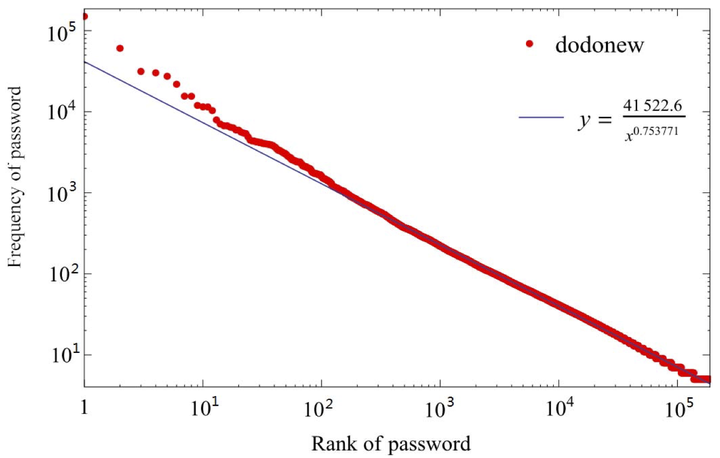 The cumulative distribution function of passwords.
The cumulative distribution function of passwords.
Abstract
Despite three decades of intensive research efforts, it remains an open question as to what is the underlying distribution of user-generated passwords. In this paper, we make a substantial step forward toward understanding this foundational question. By introducing a number of computational statistical techniques and based on 14 large-scale data sets, which consist of 113.3 million real-world passwords, we, for the first time, propose two Zipf-like models (i.e., PDF-Zipf and CDF-Zipf) to characterize the distribution of passwords. More specifically, our PDF-Zipf model can well fit the popular passwords and obtain a coefficient of determination larger than 0.97; our CDF-Zipf model can well fit the entire password data set, with the maximum cumulative distribution function (CDF) deviation between the empirical distribution and the fitted theoretical model being 0.49%~4.59% (on an average 1.85%). With the concrete knowledge of password distributions, we suggest a new metric for measuring the strength of password data sets. Extensive experimental results show the effectiveness and general applicability of the proposed Zipf-like models and security metric.